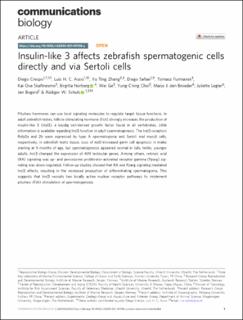| dc.contributor.author | Crespo, Diego | |
| dc.contributor.author | Assis, Luiz H. C. | |
| dc.contributor.author | Zhang, Yu Ting | |
| dc.contributor.author | Safian, Diego | |
| dc.contributor.author | Furmanek, Tomasz | |
| dc.contributor.author | Skaftnesmo, Kai Ove | |
| dc.contributor.author | Norberg, Birgitta | |
| dc.contributor.author | Ge, Wei | |
| dc.contributor.author | Choi, Yung-Ching | |
| dc.contributor.author | den Broeder, Marjo J. | |
| dc.contributor.author | Legler, Juliette | |
| dc.contributor.author | Bogerd, Jan | |
| dc.contributor.author | Schulz, Rüdiger W | |
| dc.date.accessioned | 2021-10-22T12:44:30Z | |
| dc.date.available | 2021-10-22T12:44:30Z | |
| dc.date.created | 2021-08-24T16:43:03Z | |
| dc.date.issued | 2021 | |
| dc.identifier.citation | Communications Biology. 2021, 4 (1), 1-13. | en_US |
| dc.identifier.issn | 2399-3642 | |
| dc.identifier.uri | https://hdl.handle.net/11250/2825042 | |
| dc.description.abstract | Pituitary hormones can use local signaling molecules to regulate target tissue functions. In adult zebrafish testes, follicle-stimulating hormone (Fsh) strongly increases the production of insulin-like 3 (Insl3), a Leydig cell-derived growth factor found in all vertebrates. Little information is available regarding Insl3 function in adult spermatogenesis. The Insl3 receptors Rxfp2a and 2b were expressed by type A spermatogonia and Sertoli and myoid cells, respectively, in zebrafish testis tissue. Loss of insl3 increased germ cell apoptosis in males starting at 9 months of age, but spermatogenesis appeared normal in fully fertile, younger adults. Insl3 changed the expression of 409 testicular genes. Among others, retinoic acid (RA) signaling was up- and peroxisome proliferator-activated receptor gamma (Pparg) signaling was down-regulated. Follow-up studies showed that RA and Pparg signaling mediated Insl3 effects, resulting in the increased production of differentiating spermatogonia. This suggests that Insl3 recruits two locally active nuclear receptor pathways to implement pituitary (Fsh) stimulation of spermatogenesis. | en_US |
| dc.language.iso | eng | en_US |
| dc.title | Insulin-like 3 affects zebrafish spermatogenic cells directly and via Sertoli cells | en_US |
| dc.type | Peer reviewed | en_US |
| dc.type | Journal article | en_US |
| dc.description.version | publishedVersion | en_US |
| dc.source.pagenumber | 1-13 | en_US |
| dc.source.volume | 4 | en_US |
| dc.source.journal | Communications Biology | en_US |
| dc.source.issue | 1 | en_US |
| dc.identifier.doi | 10.1038/s42003-021-01708-y | |
| dc.identifier.cristin | 1928445 | |
| dc.relation.project | Norges forskningsråd: 226221 | en_US |
| dc.relation.project | Norges forskningsråd: 221648 | en_US |
| cristin.ispublished | true | |
| cristin.fulltext | original | |
| cristin.qualitycode | 1 | |
